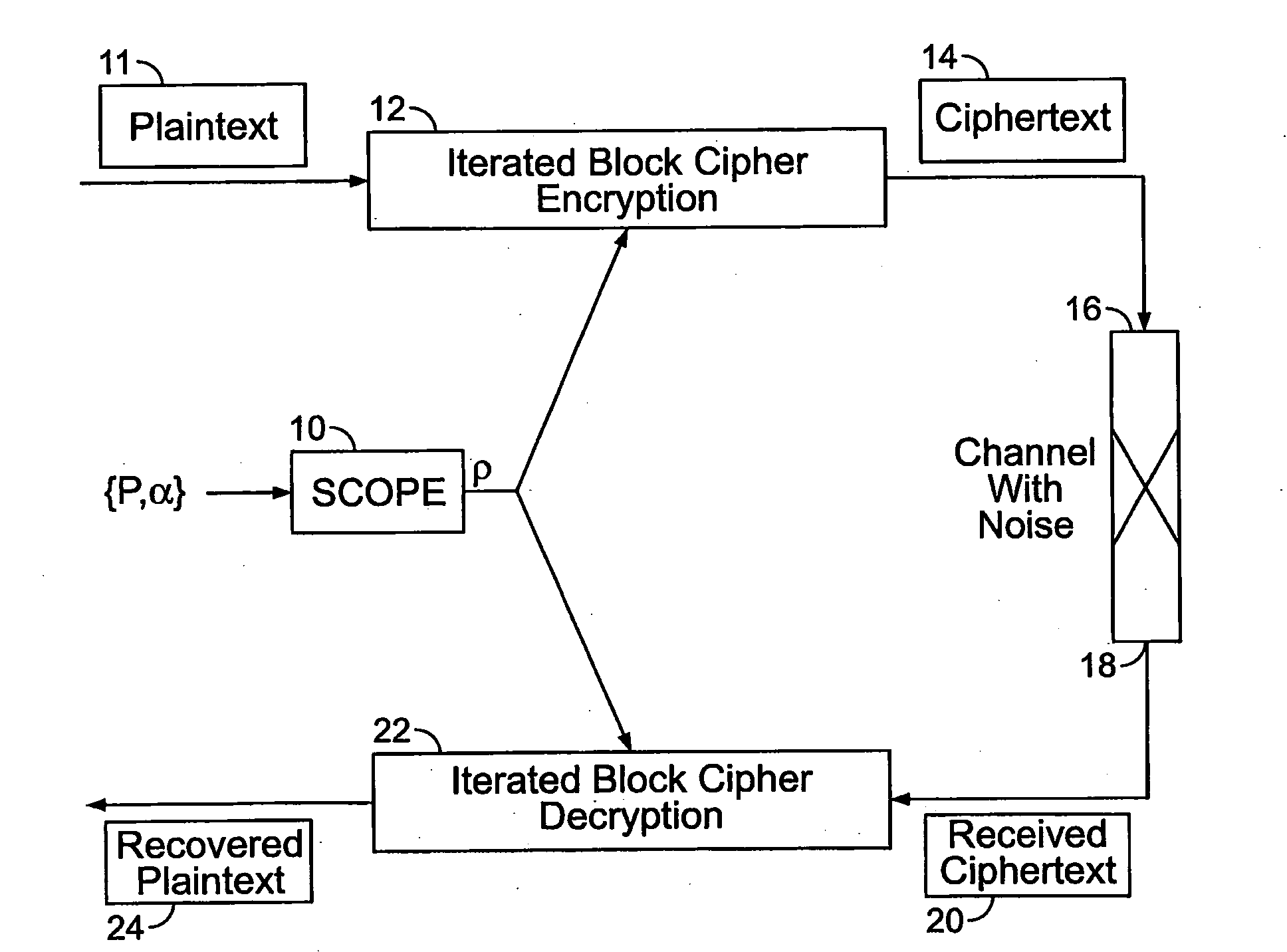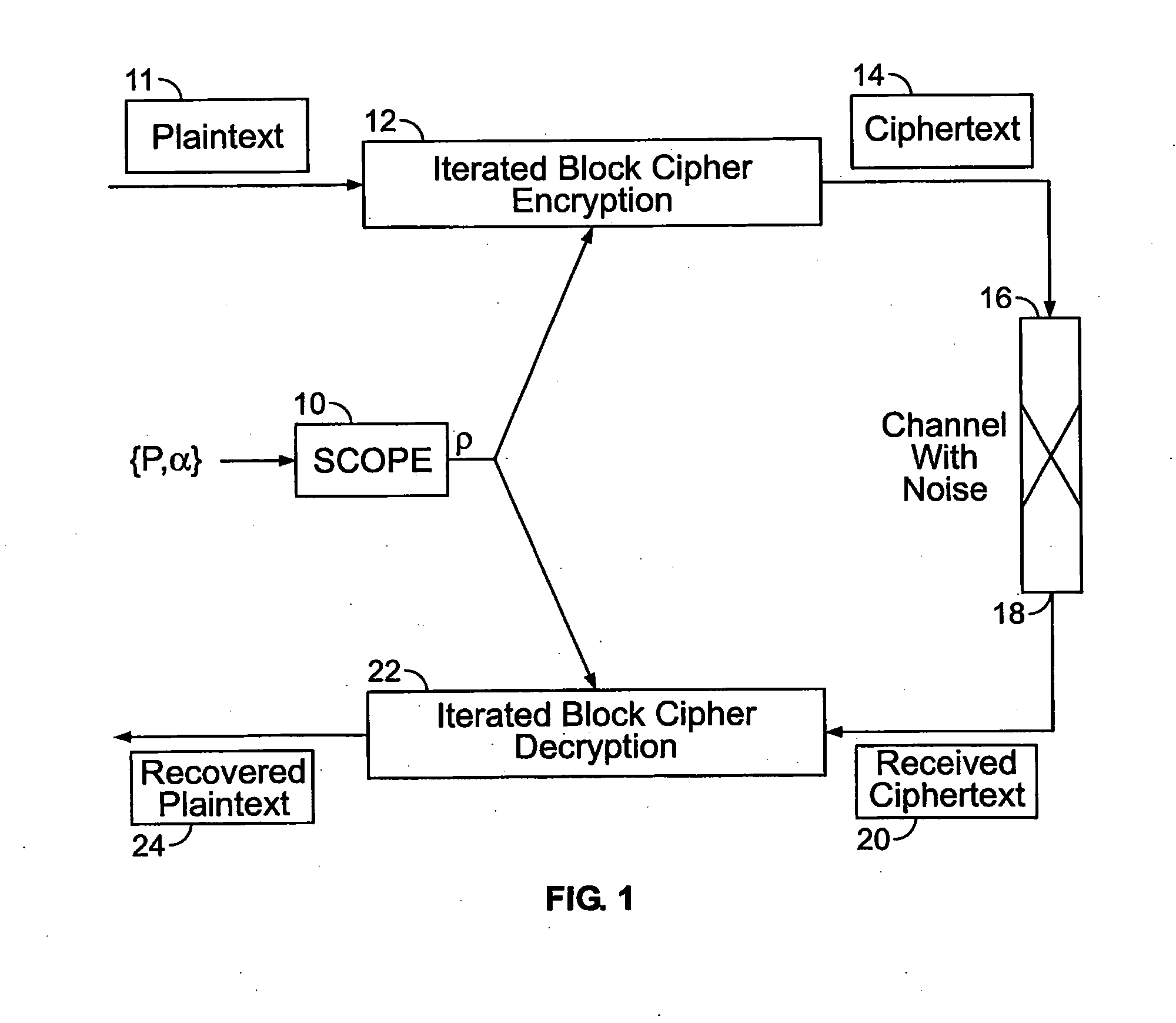Method and apparatus for maintaining data integrity for block-encryption algorithms
- Summary
- Abstract
- Description
- Claims
- Application Information
AI Technical Summary
Benefits of technology
Problems solved by technology
Method used
Image
Examples
Embodiment Construction
[0035]With reference to FIG. 1, there is shown the SCOPE method of the present invention, indicated generally at 10. The SCOPE method 10 operates in conjunction with an iterated block cipher encryption procedure 12 on one or more blocks of plaintext 11 to produce an encrypted ciphertext 14. During encryption, a diffusion function ρ is selected from the set of all diffusion / permutation functions P based on a parameter α, where α measures the amount of diffusion (i.e., order of permutation) of the function ρ. The selected diffusion function ρ is then applied by the encryption routine 12 to the plaintext 11. The user can choose the desired amount of diffusion α for a given block of plaintext 11. The value of α and, hence, the diffusion function ρ can change from block to block of the plaintext 11. In this way, the amount of diffusion in ρ is controlled on a block-by-block basis of the plaintext 11 so as to control the amount of avalanche effect induced by the round function f applied t...
PUM
 Login to View More
Login to View More Abstract
Description
Claims
Application Information
 Login to View More
Login to View More - R&D
- Intellectual Property
- Life Sciences
- Materials
- Tech Scout
- Unparalleled Data Quality
- Higher Quality Content
- 60% Fewer Hallucinations
Browse by: Latest US Patents, China's latest patents, Technical Efficacy Thesaurus, Application Domain, Technology Topic, Popular Technical Reports.
© 2025 PatSnap. All rights reserved.Legal|Privacy policy|Modern Slavery Act Transparency Statement|Sitemap|About US| Contact US: help@patsnap.com



